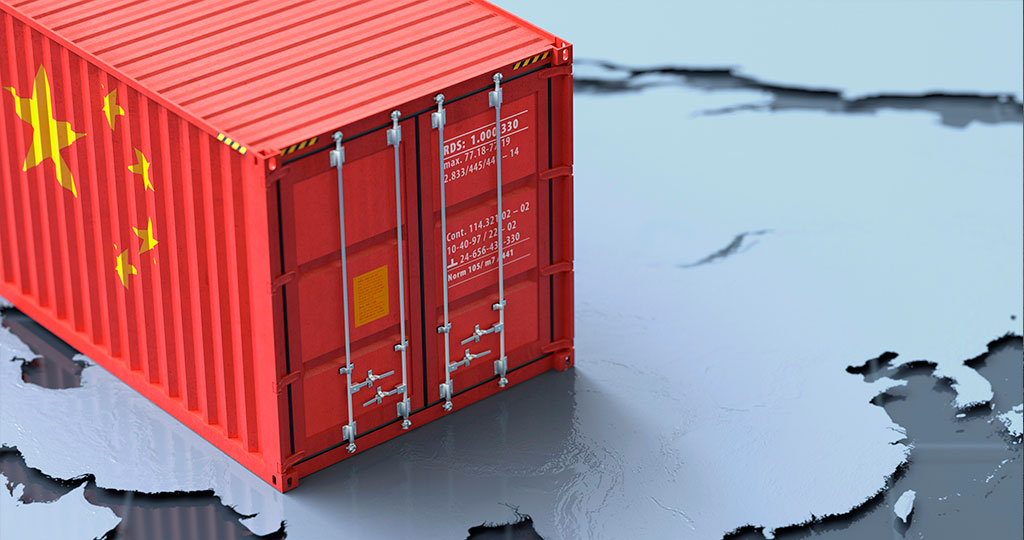The main problem of 2022 is the delivery of the raw material, that is more concerning than the prices of these materials, says Luka Rutar, Director of Procurement at Danfoss at the 8th conference of Slovenian exporters. For the last 10 months, the raw materials marketplace has changed when the pandemic affected us severely. Exceptional increase of the prices has occurred in such a short time that even customers have no memory of.
«While we were dealing with the price increase during the first half of this year, that is still remaining high, we expect a slow-down in growth by 2022 and the main problem, in my opinion, will be the accessibility of the materials», said Rutar.
Struggle for suppliers capacity
«For example, we have already noticed the problems with delivery of most of the components», says Luka Rutar. «We will receive some parts of the ordered quantity. We should also consider the exceptional cost of spot purchases that is inherent in electronics. The prices at the spot market recently have extremely increased due to limited supply and high demand».
Therefore 2022 will be the year of the fight for the opportunities for suppliers «Production capacities are limited and are not expanding as quickly as necessary in accordance with the demands. That is why it will be important to get ahead of the competition in the supply of raw materials». Suppliers do not keep up with the demands, and capacities remain limited.
The problem of empty supply chain
Rutar mentioned the problem of empty supply chains. «Due to the shortage the stocks of raw materials in the chains were exhausted. All the insurance supplies are used up which means that if a problem occurs at the beginning of the chain, it is reflected on the other part, on the final consumer. For example, because of infected workers the Chinese port is closed for four days which, for its part, leads to a three-week delay for the final consumer».
In response to all these obstacles companies make inflated projections mostly and order security, Rutar notes, which means that perhaps the actual consumption is not so great. «Which could also mean a sudden drop in demand».
Long-term supply plans and new supply strategies
Another important aspect in the field of procurement is that the supply planning horizon has changed. «If earlier companies gave forecasts of demands for 12 months ahead now they do it for 36 months ahead. For example, Danfoss has forecasts for the supply of electronics until the middle of 2023. Of course, there are differences between industries and raw materials, but all this must be taken into account».
Due to tectonic shifts in supply chains the procurement strategy will also change. «It will be necessary to think about where the strategic directions are, how to balance the risks from all possible aspects, it is necessary to use several levels. The already rapid change of items will have to be even faster as the lack of raw materials for innovation, the speed of development, the search for new components, technologies, the use of alternative raw materials».
The lack of raw materials also creates problems with personnel
At the same time, we should not forget about the hired staff. «The focus will no longer be so much on raw material prices as on accessibility, so the staff who previously dealt mainly with costs should deal now with providing resources. There are a lot of conversations, approvals, lobbying to speed up the procurement deadlines. Customers will have to talk a lot with suppliers and the number of contacts will be significantly increased. This means that there will be no time for other tasks, so there will be a lot of changes in the personnel area». An important aspect that Rutar emphasizes is also the motivation of employees to switch to new areas of work.
Customers will need new competencies. «These are skills that most people have not thought about until now. Previously, the customer had to be a good negotiator but now it is no longer in the first place. Today, it is important to solve problems creatively in order to get raw materials and at a reasonable price, so that we are ready to quickly adapt to changes». It will be necessary to invest in meeting the suppliers to work with them. «The supply chains should be understood in detail, it needs to be studied, and it may be necessary to change certain performances».
When will the final consumer start to deal with the high prices of raw materials? «It depends on the industry, the company, the market position, how quickly the company will be able to bring higher prices for raw materials to the market. I think we will be able to compensate for the higher offer prices with higher market prices within one year. Of course, as a result, all customers are concerned about inflation». He adds that it is assumed that the situation will still remain in 2022.
What will the prices for the raw material be in 2022?
«Forecasting prices for raw materials is a thankless task that is more like a weather forecast than anything else», said Luka Rutar, Director of Procurement at Danfoss. «It is not worthy to predict as we can see from the erroneous forecasts of the movement of the prices for raw materials in 2021. For the third and fourth quarters they predicted a decline in prices but now this is not the case», provided by Luka Rutar.
Copper
Is the most important raw material for Danfoss. This year copper reached a record price of almost $ 11,000 per ton. «We expect a slight slowdown in price growth at the moment and a slight moderate growth next year. But there is a lot of speculation about copper. The price is also significantly affected by the policies of individual countries, such as the United States and China. China has made huge stocks of copper for the past two years». Prices are also affected by local problems, such as strikes by workers employed in mines, because they want higher salaries as raw material prices rise. «There are many problems, we do not expect a serious price decrease for copper in 2022».
Rutar compared the dynamics of copper prices over the past 15 years, which show that the price of copper in 2009 and 2010 has hardly changed from today's level. «But the important difference is that at that time the price was growing for 26 months and now it has reached this level in just 14 months, so it was going up from the bottom. Thus, the speed has almost doubled, which is a big problem for business. That is why it is so important how well the company responds, for example, how it has insured itself on the supply side».
Financial investors from the United States also predict that copper can cost from $ 15,000 to $ 20,000. «I think that this analysis has nothing to do with reality and that we have reached a peak after which the price will decrease a little».
Aluminium
The price of aluminium corresponds to the price of copper but with a slight delay, Luka Rutar explained, because the metals are fungible in a certain part from the point of view of usability. «We also expect a slight slow-down in price growth, but it will still be at a fairly high level».
Stainless steel
The stainless steel market is abnormally overheated, prices in Europe are twice as high as in China, where there are export restrictions. We expect the situation to stabilize, the accessibility of raw materials and lower prices in particular. But these are forecasts, the risks remain.
Steel
The situation here is similar to stainless steel. Accessibility is expected to improve in 2022, raw materials are available, and prices should adjust accordingly.
Plastic
The problem is the lack of components for the production of pellets in the plastic industry, the lack of raw materials is a global problem because there is no raw material, the production process is annoying. «We expect that the prices for pellets will increase by an average of 20 percent. It's already happening this year and it's not over yet».
Paper
In the paper industry the price spike was very high but despite the faster reaction of the raw material market, the shortage still persists, and the price remains high. This is more seen in the final version.
Wood
There is a large shortage of wood, for example, it was more difficult to buy pallets and similar goods. «The United States took all the forest from Europe and Russia. If there is no intervention, if this does not die down, there will be a lot of problems in the near future. Slovenia has an advantage at the local level because we have huge stocks of wood. While, for example, China is facing a significant shortage of wood».
Electronics
The entire supply chain in the production of electronic components is annoying, there are many supply problems, Rutar explained. The world's largest manufacturer of chip components, the Taiwanese company TMSC, has published a forecast according to which the price of the latest generation of chips will increase by 5-8 percent and for older versions of chips by 20-25 percent. «Overall, we expect a five to eight percent price increase in the electronics».





